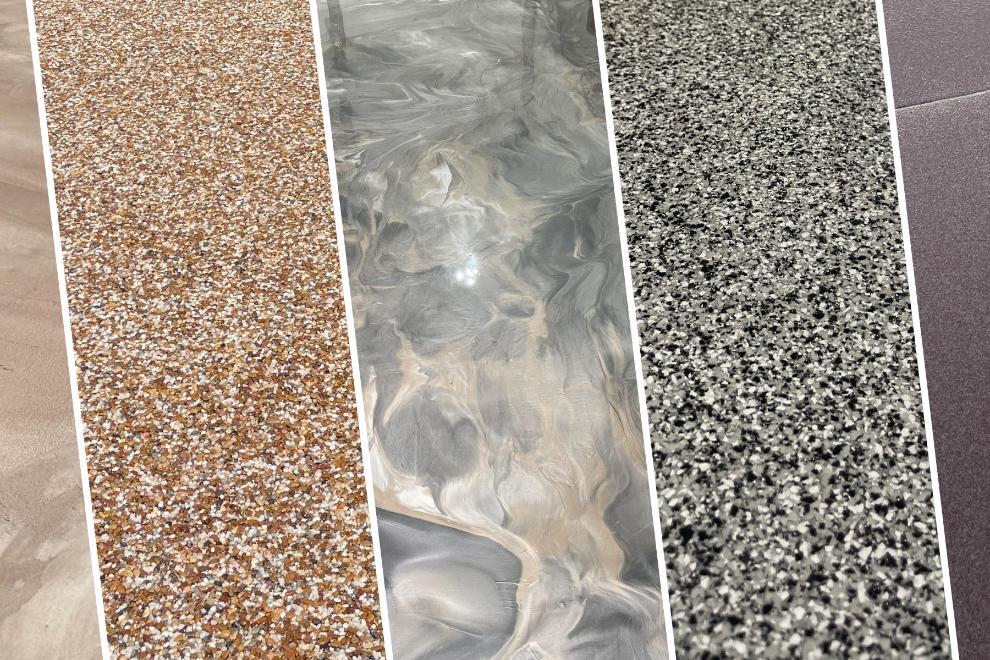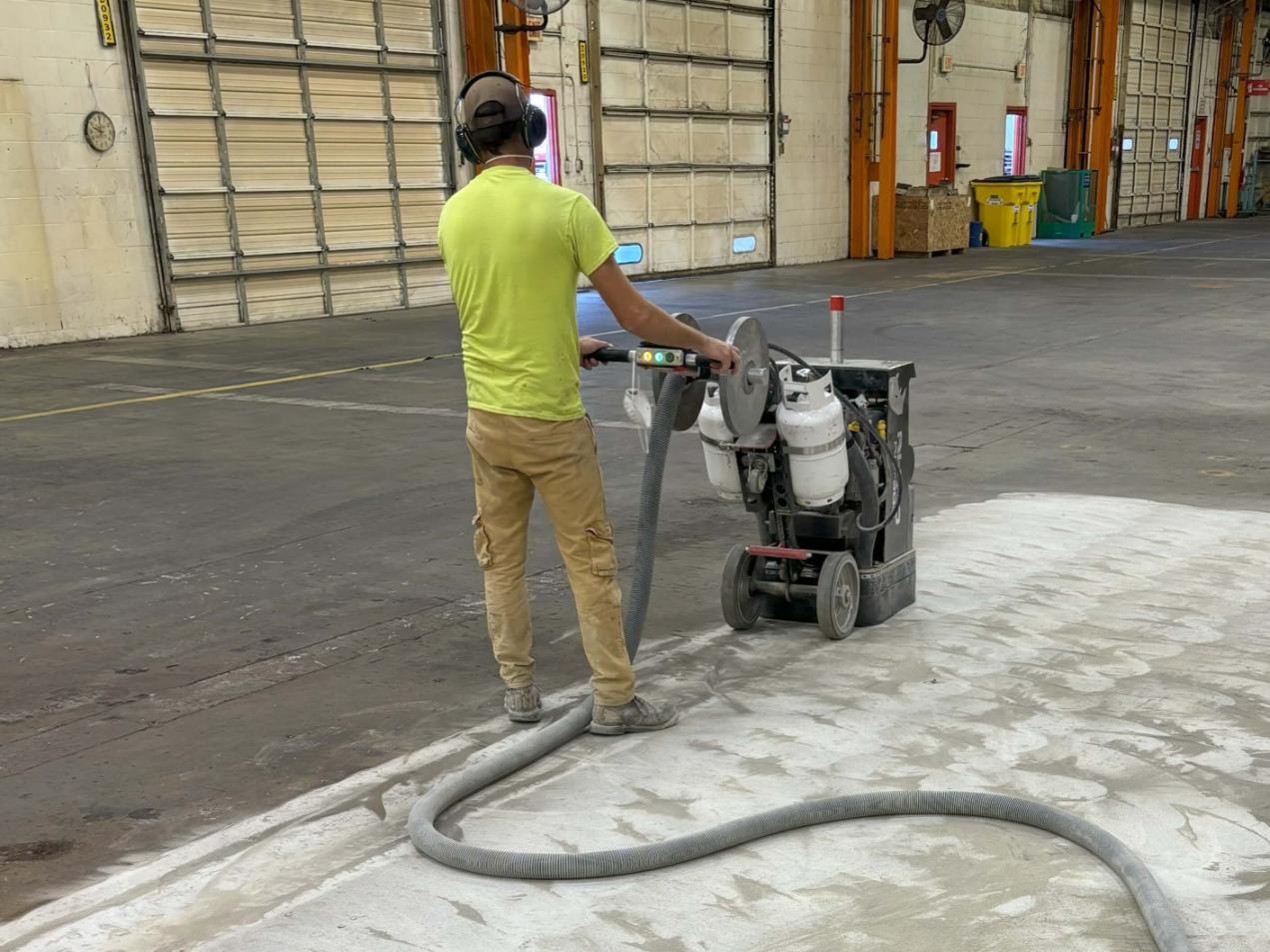What's the difference between anti-skid coating and anti-skid? Which is the right choice for your concrete? Do you need a specific anti-skid coating, or will the addition of anti-skid be sufficient for your project?
Elite Floor Coatings has coated over two million square feet of concrete. There is a subtle difference between anti-skid coatings and anti-skid. This article aims to clarify this difference so you better understand which is right for your concrete.
When you've finished reading, you'll know the differences between anti-skid and anti-skid coatings.
What Makes Anti-Skid Coatings Different From Anti-Skid?
An anti-skid coating is a system, in the same way that quartz epoxy, metallic, and paint chip are systems. Not all of those examples are anti-skid coatings, but each involves different layers creating a specific system. With an anti-skid coating, the goal is to make something anti-slip. Many anti-skid coating systems involve glue, sand, and a thin top coat.
Anti-skid is an addition that can be applied to almost any coating system. Anti-skid options include white oxide, blasting sand, and plastic beads. Different types of anti-skid are used for different applications. Concrete location, traffic volume, shoe type, and other factors influence the type of anti-skid used.
The biggest difference between anti-skid coatings and anti-skid is the goal. An anti-skid coating makes an entire floor less slippery. Anti-skid can be used to target trouble areas like entryways to reduce slipping in a particular area of the floor.
What Does An Anti-Skid Coating Look Like?
While some anti-skid systems involve glue, sand, and a top coat, other systems have additional inputs. An example is quartz epoxy.
Quartz epoxy is an epoxy floor system that is also an anti-skid coating. Made of natural colored quartz sand, the use of sand in a quartz epoxy system makes for a naturally grippy floor. Depending on the top coat, quartz epoxy can be made more or less smooth.
%20(3).jpg?width=300&height=400&name=Quartz%20Epoxy%20(Emmitsburg)%20(3).jpg)
Some other anti-skid coatings include SureCrete's Resist and traffic coatings.
What Does Anti-Skid Look Like?
Every anti-skid material has a different visual look. White oxide is white and incredibly difficult to see in a finished product. In the wrong application, blasting sand would be quite visible and look like sand spilled onto a floor. Used correctly, blasting sand blends right into a natural coating like river rock. Plastic beads are white like white oxide, but have a larger grain. These are more visible in certain darker coatings.

While anti-skid coatings make up the entire floor system, anti-skid can be applied to particular areas of a floor. You might not be able to see a visual difference in the floor, but you could feel the difference in the grip where anti-skid has been used.
When To Use Anti-Skid Coatings
So, when is it appropriate to use an anti-skid coating system? In cases where the entire area is concerned with slipping, an anti-skid coating is best.
Loading Ramps & Docks
Anti-skid coatings are a good choice for any loading dock. Whether your ramp is attached to a trailer or is stationary at a warehouse, you don't want anyone to slip. Loading docks are often exposed to the weather, which risks rain and other weather conditions, causing a slipping hazard. Loading ramps are at an incline, keeping users from a sure footing.

Applying an anti-skid coating like quartz epoxy or SureCrete’s Resist will give these loading areas more grip for workers' boots.
Parking Decks
Parking decks and garages are public areas that benefit from good grip. These spaces experience plenty of foot traffic and risk rain and snow exposure. Any space in a parking deck needs a grip for shoes.

Swimming Pools
Lifeguards always remind swimmers to walk, not run, around a pool. There is always a concern about slipping when interacting with a swimming pool. The concrete around a swimming pool makes an excellent candidate for a non-skid coating when using acrylic cement.

When To Use Anti-Skid
Anti-skid is a helpful addition to floor systems when there's an area where you don't want to slip. This might not be the whole floor, but it may be an area of the floor that is particularly vulnerable to slipping.
Entryways
Our footing is less sure when we transition from one floor to another. Even if we have a doorway to grab onto, our feet don't always know what they're stepping into. Entryways are a common place where anti-skid is added to coatings.

Especially for entryways transitioning from inside to outside, anti-skid is valuable. If you're entering a building with snow on your boots, you may want some anti-skid to help prevent slipping while you wipe your shoes on the welcome mat.
Around Grease
The cartoons are right: grease can be as slippery as a stray banana peel. Whether it's near a grill or in a mechanic shop, you want to give your shoes extra grip when grease is nearby.

Around Water
Most businesses with sinks and dishwashers keep mats on the floor. These mats are not just to keep a dishwashing person comfortable while standing still–the mats act as anti-skid.

Rather than using mats, anti-skid can be added to a coating anywhere that water can spill or splash.
What To Know: Anti-Skid Coatings & Anti-Skid
Anti-skid coatings and anti-skid are quite similar. Even if you mix the two up, a professional epoxy installer will understand what you're talking about. But for your edification, anti-skid coatings are full systems that intend to prevent someone from slipping. Anti-skid is an element that can be added to full systems that may not already provide grip.
Anti-skid is versatile, allowing for different degrees of grip on the same floor. Anti-skid coatings create a uniform grip for situations that require it.
Want to learn more about epoxy floors? Check out these resources next.
.png?width=1800&height=528&name=Elite%20Floor%20Coatings%20Header%20Logo%20With%20White%20Background%20(1).png)



.jpg)

